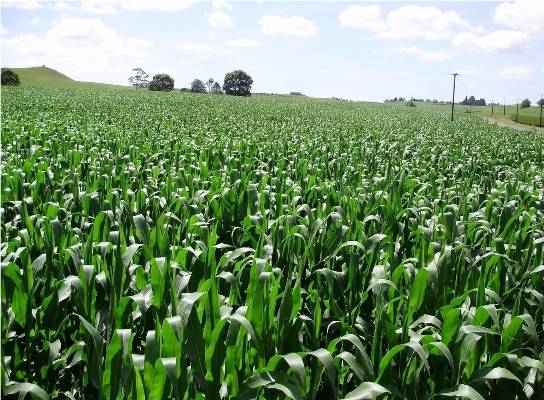The area in maize is thought to be 10-15% greater than normal in many areas, as farmers replenish silage pits largely emptied in last summer’s severe drought.
About 80% of maize crops are used to make silage, with the rest for grain production.
It is getting dry again in some areas, notably the upper North Island. That will help the harvest, which has started and will move into peak season over the next month or so, but rain is needed for the big job of regrassing.
Seed companies are well stocked with annual and perennial ryegrass seed.
After an excellent production season last year, Agricom was in its best position by quality and quantity for several years, national sales and marketing manager Mark Brown said.
In a perfect world, resowing of ryegrasses would be completed around the country by March 15-20, he said. Resowing would be starting already if there was rain about.
It wasn’t and at the moment it looked like regrassing could carry over into next month, he said.
Waikato Federated Farmers president James Houghton is one dairy farmer facing that predicament.
“I say that after April 1, every week is a month,” he said. “If I resow a week later it is an extra month before it can be grazed.”
Waikato had been very dry for the past two months, he said. Indications were maize crops were surviving the dry, but harvesting was having to be brought forward in many cases to protect existing yields.
Houghton was hoping for the best, with his crop still several days away from scheduled harvest.
A perfect growing spring had allowed much more grass silage to be made, but that was being fed out now because there was no grass growth.
At this time last year Houghton was feeding out 100% silage, palm kernel and protein meal, whereas this year the ratio was 90%, he said.
“It’s close to being a drought again.”
The good spring gave maize crops a great start, but in parts of Waikato and also in Northland crops showed signs of drying as early as January 20, Pioneer seed spokesman Barry McCarter said.
Crops in paddocks with good water-holding capacity would have got another two to three weeks of growth, he said.
“They would have run out of water by February 15.”
From Bay of Plenty south, growing conditions were more favourable and it had been a good season in most areas, he said.
The industry was expecting a trend towards more maize, even where it was exposed to drought conditions.
“A mediocre maize crop is better than no grass,” McCarter said. “It will give you more dry matter.”
The maize cycle – as well as crops like turnips and chicory – will mean more business for seed companies, as grasses follow in rotation.
Perennial ryegrasses were the main pasture, but on some dairy runoff zones and in some under-performing paddocks annual ryegrasses would go in, followed again by maize in the spring, Agricom’s Brown said.
He believed there would also be a lot of under-sowing in the upper North Island to replenish existing pasture struggling in the dry conditions.










